

alex latronico
Walter rodney como a europa subdesenvolveu a africa 1(1) Atlântico Negro - Na Rota dos Orixás. History: Search Results. La Guerre de 1914 illustrée (Gabriel Hanotaux) – 1- Les origines diplomatiques du conflit - 14-18Hebdo.fr. Gabriel Hanotaux, 61 ans en 1914, est diplomate, historien et homme politique. « L’Histoire illustrée de la Guerre de 1914 » a été publiée en 1924 dans sa version intégrale.
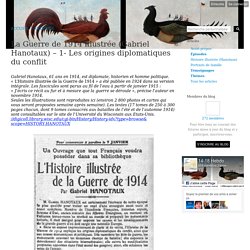
Les fascicules sont parus au fil de l’eau à partir de janvier 1915 : « J’écris ce récit au fur et à mesure que la guerre se déroule », précise l’auteur en novembre 1914. Seules les illustrations sont reproduites ici (environ 2 800 photos et cartes qui vous seront proposées semaine après semaine). Between flowers and cannons in the Great World War (1914 1918) the end of Belle Époque and the beginning of the Brief 20th Century in an album of portraits. O Zeppelin Passou por Aqui.
O horizonte republicano. DJANGO LIVRE atualizado. Hamburg Zoo. Races and skulls 1. TRABALHO INDEPENDÊNCIA DO MÉXICO ate 1867. Mexico ate 1867. LAKATOS MARCONI FUNDAMENTOS DE METODOLOGIA CIENTIFICA. 6 Hitler's consolidation of power. World War I in Photos. Children’s experiences of World War One. Drs Stacy Gillis and Emma Short draw on surviving schoolwork and propaganda to explore how World War One affected all aspects of children’s lives.
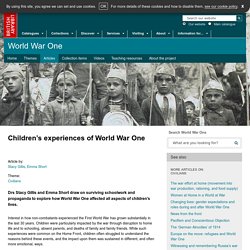
Interest in how non-combatants experienced the First World War has grown substantially in the last 30 years. Children were particularly impacted by the war through disruption to home life and to schooling, absent parents, and deaths of family and family friends. While such experiences were common on the Home Front, children often struggled to understand the reasons behind these events, and the impact upon them was sustained in different, and often more emotional, ways.
Children and the War - a book for young people A book of patriotic readings addressed to school children, published in 1917 in Italy. View images from this item (4) Perceptions challenged. Life on the German Home Front during the First World War examined for Centenary News: how did German society adapt? The First World War brought about significant changes to the way people lived their lives on the home front in Germany, writing for Centenary News, Claire Wotherspoon reports.
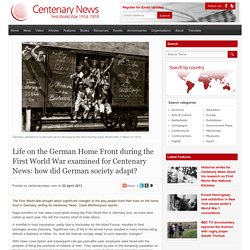
Huge numbers of men were conscripted during the First World War in Germany and, as more were called up each year, this left the country short of male labour. A shortfall in food importation, partly due to blockades by the Allied Forces, resulted in food shortages across Germany. Significant loss of life in the armed forces resulted in many homes being without a husband or father. So, how did German society adapt to such dramatic changes? With mass conscription and subsequent call-ups year after year, employers were faced with the problem of filling the positions of millions of men. While the millions of men that made up the German army were fighting, many women and families were left to adapt to home life as they had never experienced it before. Germany During World War One. Introduction June 22nd - Conflict Begins The Schlieffen Plan A State Of Imminent War Danger August 3rd, 1914 - World War One Begins The Battle At Marne A War Of Attrition - The Trench Forms The Eastern Front 1915 - Germany Slows Down The Effect of War Back Home The German Navy - Why The United States Entered World War One 1918 - Germany Makes a Treaty With The Bolsheviks The German Army Is Defeated An Immediate Armistice Conclusion Introduction The Great War, World War One, consisted of two stages: conventional warfare that lasted from 1914 to 1916, and a war of desperate expedients, when both sides struggled for their own existences, lasting until the end.
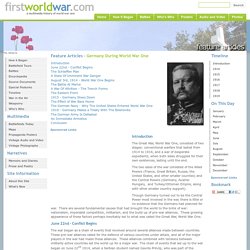
The two sides of the war consisted of the Allied Powers (France, Great Britain, Russia, the United States, and other smaller counties) and the Central Powers (Germany, Austria-Hungary, and Turkey/Ottoman Empire, along with other smaller country support). The German Home Front. With Germany blockaded by the Allies, hardship and shortages took their toll on the home front. 2014 marks the centenary of the outbreak of World War 1.
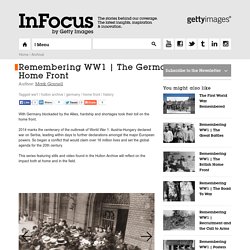
Austria-Hungary declared war on Serbia, leading within days to further declarations amongst the major European powers. So began a conflict that would claim over 16 million lives and set the global agenda for the 20th century. This series featuring stills and video found in the Hulton Archive will reflect on the impact both at home and in the field. Explore more in the German home front on Getty Images Find more WW1 stills and WW1 video on Getty Images. Battles - The Western Front.
World War I. The Holsworthy camp at Liverpool in western Sydney was the largest and longest running internment camp.
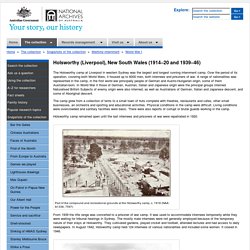
Over the period of its operation, covering both World Wars, it housed up to 6000 men, both internees and prisoners of war. A range of nationalities was represented in the camp, in the first world war principally people of German and Austro-Hungarian origin, some of them Australian-born. What effect did WW1 have on Germany. Germany WW1 Reading. WW1 Propoganda. A ESPANHA MUÇULMANA 1. EL ESTADO MODERNO. La Conquista de Granada, la heroica Cruzada que convirtió en «Católicos» a los Reyes de España. Granada se había convertido en los albores de la Edad Moderna en el último reducto musulmán de la Península ibérica.
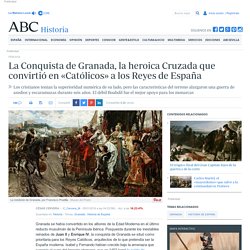
Pospuesta durante los inestables reinados de Juan II y Enrique IV, la conquista de Granada se situó como prioritaria para los Reyes Católicos, arquitectos de lo que pretendía ser la España moderna. Isabel y Fernando habían crecido bajo la amenaza que suponía el auge del Imperio otomano, que en 1453 logró la caída de Constantinopla, y no estaban dispuestos a tolerar el desafío de Muley Hacén, el emir de Granada, que durante este periodo se apoderó de varios bastiones en la frontera cristiana y dejó de pagar el tributo estipulado con los cristianos. Con la toma de estos bastiones, entre ellos Zahara, esclavizó y exterminó a los defensores. La Europa cristiana iba, esta vez sí, a aceptar el duelo.
El Papa Sixto VI apoyó la empresa militar instituyendo una Cruzada, a modo de asistencia financiera. Dossier19_FULGOR Y MUERTE DE GRANADA.pdf. Historia de España.- Primera parte. A&D --------- Historia de España Primera parte Desde la noche de los tiempos hasta hasta la invasión musulmana -------- "Que el reinar es tarea, que los cetros piden más sudor que los arados, y sudor teñido de las venas; que la Corona es el peso molesto que fatiga los hombros del alma primero que las fuerzas del cuerpo; que los palacios para el príncipe ocioso son sepulcros de una vida muerta, y para el que atiende son patíbulos de una muerte viva; lo afirman las gloriosas memorias de aquellos esclarecidos príncipes que no mancharon sus recordaciones contando entre su edad coronada alguna hora sin trabajo.
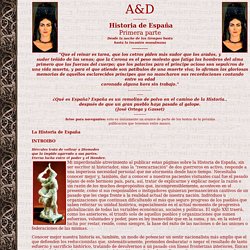
" ................ ----- ¿Qué es España? Obsidiana (4) Capítulo 04 Teotihuacán APRESENTAÇÃO PP. Capítulo 04 Teotihuacán APRESENTAÇÃO alex.